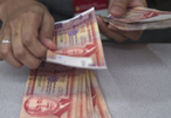This chapter contains useful information for Brunei Darussalam’s visitors, including hotel listings and contact information for emergency facilities, ministries, missions, banks, airlines, and taxi services, which can assist in making a stay in Brunei Darussalam safe and smooth. The chapter’s Facts for Visitors section offers insight into communications, dress, business culture, language,...
Asia Economy
Displaying 1585 - 1590 of 1877
ASEAN is set to declare itself a common market at the end of 2015, in a move that will create new opportunities for investors in a region the boasts not only some of the world’s fastest-growing economies, but also an expanding middle class. Current estimates for the combines GDP of ASEAN nations have been put at around $2.3trn, with this figure set to rise to $10trn by 2030. Economic growth in...
Buoyed by hydrocarbon revenues, Brunei Darussalam’s economy has continued to grow, enabling a new push to greater diversification and creating job opportunities for locals. The government maintains strong fiscal and current account surpluses and is showing an appetite to direct this toward future growth and diversification. Indeed, with oil and gas making up more than two-thirds of the economy,...
Chapter | Country Profile from The Report: Brunei Darussalam 2013
Lodged between the Malaysian states of Sabah and Sarawak, Brunei Darussalam is located on the north-west coast of Borneo, in the South China Sea. The Sultanate has a young population, with around 54% of Bruneians under the age of 30. The country also has one of the highest per capita GDPs in the region, hitting just over $48,000. This ranks Brunei Darussalam second only to Singapore within the 10...
As ASEAN chair in 2013, Brunei Darussalam has a regional agenda to push forward alongside its domestic plans for the year. Chief among its local priorities is developing alternative resources streams in its economy, which has long been driven by its oil and natural gas revenues.
Economic update | The Philippines: FDI on the up
19 Apr 2013
After years of slow growth in foreign direct investment (FDI) following the global financial crisis, the Philippines is now showing high potential for a return to 2007 FDI levels. The country still lags behind some of ASEAN neighbours in overall investment per capita levels, although strong economic growth and new anti-corruption measures, combined with a recent credit rating upgrade from Fitch Ratings, have improved the Philippines’ reputation.

